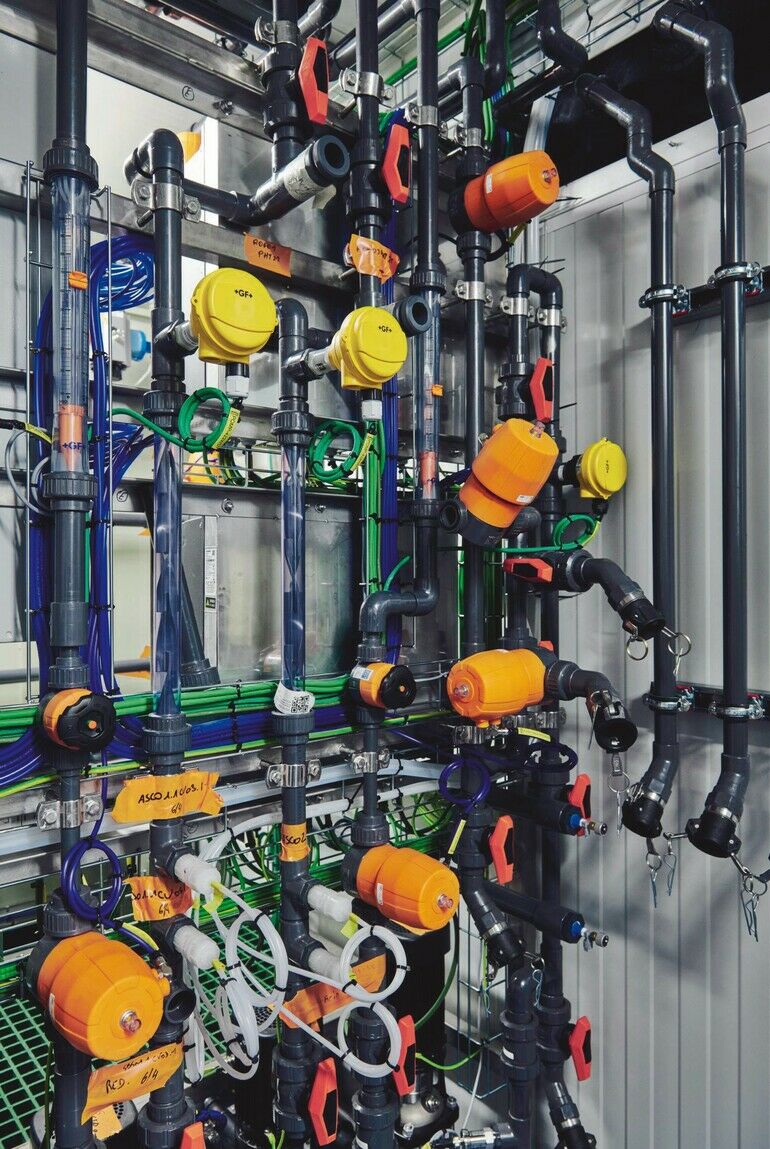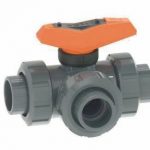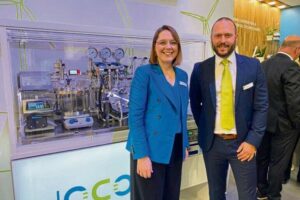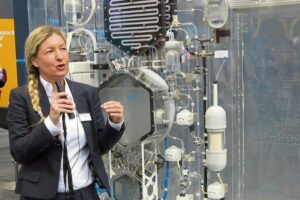Firmen im Artikel
Water is one of the most important resources for production processes. A study looking at the water usage by the German manufacturing sector conducted by the Federal Environmental Agency in 2016 found that the industry consumed around 4,5 billion m3 of water throughout that year. However, the quality standards can differ greatly, depending on the industry sector or application. At the same time, the process industry produces large amounts of contaminated water that must be treated. Sustainability and quality must not be mutually exclusive in both water supply and disposal. For this reason, it is important to implement solutions that require as little manual intervention as possible. The answer is the combination of a modern piping system made of durable and, as far as possible, maintenance-free materials and a holistic approach to process automation. Plastics such as PVC-U and polypropylene in particular have established themselves as standard materials for piping systems as they are corrosion-free compared to metal and require minimal maintenance. Many plastics also have a high chemical resistance and do not introduce any foreign substances into the transported medium, while smooth inner surfaces and a lack of dead space ensure a clean flow.
Intelligent processes
Real-time data on flow, pH-values, level or temperatures provide insights into what is happening within the piping system, which can reduce both maintenance effort and the risk of system failures. Depending on the application, industrial valves such as butterfly valves or ball valves can be controlled with pneumatic and electric actuators, while smart actuators can be accessed remotely with an app. That way, operators always carry the most important information in their pocket.
Efficient production
The various forms of data that are collected by sensors are not only important for a reliable plant operation. Data also unlocks hidden potential in piping systems by offering valuable insights that lead to smart decisions and concrete actions. Possible improvements include switching to smaller pumps or improving pressure management – and therefore saving costs. Here too, plastics offer a number of benefits, as the lower operating torque of pneumatic and electric actuators reduces energy consumption and allows for smaller valves. But for maximum efficiency, modularity also plays an important role. Customised all-in-one solutions guarantee compatibility and help companies find the best possible solutions for their processes.
Sustainable components
For companies in the chemical process industry, even the piping system itself can become an important part of their sustainability efforts. The long-lasting nature and low weight of plastic components ensure a long operational lifetime that can be increased by additional quality assurance. Depending on the type of piping system, companies can check pipe connections with the help of ultrasonic NDT (non-destructive testing) or analyse infrared welds with photosensory assurance. The low weight of plastics also reduces emissions during transport, while the digital tracking of individual components replaces extensive paper documentation. And at the end of their lifecycle, plastics used in certain applications can be recycled.
Interoperable all-in-one solution
GF Piping Systems offers a wide range of plastic piping systems as well as Interoperable all-in-one solutions for process automation. As a result, lightweight and long-lasting valves such as the Butterfly Valve 565 or the Ball Valve 543 Pro are combined with standardised digital interfaces. From pneumatic actuators and electro-pneumatic positioners to smart electric actuators, they can be implemented in many different applications. Processes are monitored with the help of measurement and control instruments such as the Flowtramag magnetic flow meter, the 9900 Smartpro transmitter or the Ultrasonic Flowmeter GF U1000 V2. Thanks to a modular approach, the best possible system can be configured for every application.
Companies like Pure Life Carbon in Canada demonstrate how effective this kind of complete solution can be. It has developed CO2-negative growing mediums for the agricultural industry that are made of carbon. During production, wood is subjected to very high temperatures before it is enriched with essential nutrients in large tanks. Here, Pure Life Carbon uses a mix of process water and proprietary chemicals that are subsequently purified in a filtration plant and reused. In order to achieve maximum efficiency, the company selects a complete solution by GF Piping Systems that closes the control loop and automates all processes – the result is a sustainable cycle and a consistently high quality. Due to the close collaboration with GF Piping Systems, the production plant can also be continually optimised.
Gerorg Fischer GmbH, Albershausen, Germany
Hall 8.0, Booth E64
Upgraded: Ball valve goes digital
The ball valve 543 by GF Piping Systems is a durable and flexible solution used for mixing and distribution in complex chemical and pharmaceutical processes. Now, sensors and drives have been added to the 543 Pro model, opening up new possibilities for process automation. On a mechanical level, the three-way ball valve increases safety with a new lever that prevents unintentional operation thanks to a locking ring. For an extra layer of security, a padlock can also be fitted in order to protect the valve against unauthorised usage. Regarding the digital functionality, the 543 Pro features a retrofittable position feedback sensor with an LED display which reliably records the position of the control leaver. The compact double sensor can be easily mounted with a snap-on design and is suitable even for tight spaces within the piping system. And, in addition to traditional manual operation and a pneumatic control unit, the ball valve can be operated fully automatically with an electrical actuator. As a result, it can be seamlessly integrated into the end user’s process control and automation systems. Finally, the 543 Pro features a scannable data-matrix-code which simplifies the storage of all component information and enables individual traceability.










